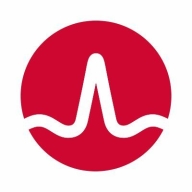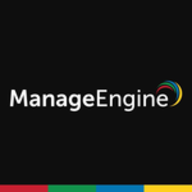

ManageEngine Applications Manager and DX SaaS are comprehensive application management tools. ManageEngine Applications Manager seems favorable in terms of simplicity, while DX SaaS stands out with its extensive features and scalability.
Features: ManageEngine Applications Manager offers robust monitoring features, intuitive tools, and a simple interface. DX SaaS provides comprehensive capabilities, scalability for large-scale deployments, and advanced configuration options.
Room for Improvement: ManageEngine Applications Manager could improve in advanced reporting, integration capabilities, and scalability for larger environments. DX SaaS could enhance cost-effectiveness, simplify its user interface, and reduce deployment complexity.
Ease of Deployment and Customer Service: ManageEngine Applications Manager is appreciated for its straightforward deployment process and responsive support. DX SaaS may require more time for deployment but offers more advanced customer service for larger setups.
Pricing and ROI: ManageEngine Applications Manager is noted for its cost-effectiveness, offering good ROI for smaller to mid-sized businesses. DX SaaS, while perceived as more expensive, justifies its pricing with advanced features and higher scalability, providing better ROI for large enterprises.
| Product | Market Share (%) |
|---|---|
| ManageEngine Applications Manager | 0.7% |
| DX SaaS | 0.5% |
| Other | 98.8% |

| Company Size | Count |
|---|---|
| Small Business | 4 |
| Midsize Enterprise | 4 |
| Large Enterprise | 9 |
Dx SaaS is a solution whose goal is to ensure that businesses and organizations can monitor and manage the way that users experience their applications. This solution contains many powerful tools that are designed to give administrators the maximum amount of control over the experiences that clients have when employing their applications. Organizations and businesses can rest easily and ensure that the product they put out into the world is always being watched for potential issues that will be resolved proactively and quietly.
Dx SaaS Benefits
Some of the benefits that come from using Dx SaaS include:
Dx SaaS Features
When users choose to employ the DX SaaS solution, they gain access to many different capabilities. These features include:
Reviews from Real Users
The DX SaaS solution enables companies and organizations to take charge of the digital experiences that their customers receive. It is designed in a way that empowers these companies to truly monitor their applications and maintain a positive user experience. DX SaaS recognizes that applications can be run on any number of platforms. As a result, solutions that monitor and analyze applications need to be capable of handling a wide variety of platforms. This is one of the considerations that the solution’s designers made integral to its design.
Administrators can leverage DX SaaS to spot potential issues before they can become problems for the users of their applications. DX SaaS has metrics that can provide application administrators with important insights. Patterns and areas where trouble can arise are immediately exposed so that administrators can take the steps that are necessary for the applications to run smoothly.
A consultant at a technical services company writes, “It supports numerous platforms.” Furthermore, they add, “The CA APM blaming metrics are quite useful in identifying a potential issue.”
ManageEngine Applications Manager is an application performance management (APM) solution that is designed to give users deep insights into both the way that their applications perform and the way that users of those applications experience them. Organizations can use this solution to identify areas where their critical applications are lacking and address them before there are any negative repercussions. ManageEngine Applications Manager is the kind of tool that companies of all sizes can use to keep their applications running in the best way possible.
ManageEngine Applications Manager Benefits
Some of the ways that organizations can benefit by deploying ManageEngine Applications Manager include:
ManageEngine Applications Manager Features
Some of the many useful features ManageEngine Applications Manager has to offer include:
Reviews from Real Users
ManageEngine Applications Manager is a solution that stands out when it is compared to many of its competitors. It is part of a complete suite of management tools that users can take advantage of. The way that ManageEngine Applications Manager keeps up to date with a regular schedule of software updates enables organizations to manage their applications without worrying that they are missing any important capabilities or features. If any feature is absent, users can integrate the solution with other monitoring solutions. ManageEngine Applications Manager regularly undergoes updates that ensure that users have access to all of the latest features and patches.
Rodrigo T., the CEO of AXIOVISTA spa, writes, “This solution is a part of a complete suite of management tools. So, it can be integrated with other solutions for monitoring networks, which is very important. You can expand it or interconnect it with many other tools, which is a powerful feature.”
Syed A., the enterprise senior account manager of sales at a tech services company, writes, “Our customers appreciate that ManageEngine sends regular updates, upgrading their software several times a year.”
We monitor all Application Performance Monitoring (APM) and Observability reviews to prevent fraudulent reviews and keep review quality high. We do not post reviews by company employees or direct competitors. We validate each review for authenticity via cross-reference with LinkedIn, and personal follow-up with the reviewer when necessary.